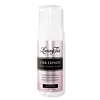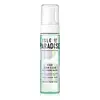Loving Tan 2 HR Express Deluxe Bronzing Mousse Versus Isle of Paradise Glow Clear Self-Tanning Mousse Medium
What's inside
What's inside
 Key Ingredients
Key Ingredients

 Benefits
Benefits

 Concerns
Concerns

 Ingredients Side-by-side
Ingredients Side-by-side

Water
Skin ConditioningDihydroxyacetone
Skin ConditioningPropylene Glycol
HumectantEthoxydiglycol
HumectantPanthenol
Skin ConditioningErythrulose
TanningHamamelis Virginiana Water
AstringentDecyl Glucoside
CleansingPhenoxyethanol
PreservativeEthylhexylglycerin
Skin ConditioningJuglans Nigra Shell Extract
AstringentAloe Barbadensis Leaf Juice
Skin ConditioningParfum
MaskingHydroxypropyl Methylcellulose
Emulsion StabilisingSodium Metabisulfite
AntioxidantDimethicone PEG-8 Phosphate
EmollientAlcohol
AntimicrobialCitric Acid
BufferingSalix Alba Bark Extract
AstringentMaltodextrin
AbsorbentBenzyl Benzoate
AntimicrobialBenzyl Salicylate
PerfumingCoumarin
PerfumingCI 16035
Cosmetic ColorantCI 17200
Cosmetic ColorantCI 19140
Cosmetic ColorantCI 42090
Cosmetic ColorantWater, Dihydroxyacetone, Propylene Glycol, Ethoxydiglycol, Panthenol, Erythrulose, Hamamelis Virginiana Water, Decyl Glucoside, Phenoxyethanol, Ethylhexylglycerin, Juglans Nigra Shell Extract, Aloe Barbadensis Leaf Juice, Parfum, Hydroxypropyl Methylcellulose, Sodium Metabisulfite, Dimethicone PEG-8 Phosphate, Alcohol, Citric Acid, Salix Alba Bark Extract, Maltodextrin, Benzyl Benzoate, Benzyl Salicylate, Coumarin, CI 16035, CI 17200, CI 19140, CI 42090
Cocos Nucifera Water
MaskingDihydroxyacetone
Skin ConditioningPropylene Glycol
HumectantEthoxydiglycol
HumectantPEG-40 Hydrogenated Castor Oil
EmulsifyingGlycerin
HumectantDecyl Glucoside
CleansingGlycereth-26
HumectantErythrulose
TanningAgastache Mexicana Flower/Leaf/Stem Extract
Skin ConditioningPanthenol
Skin ConditioningAloe Barbadensis Extract
Skin ConditioningCitrus Grandis Peel Oil
MaskingCocos Nucifera Oil
MaskingEucalyptus Globulus Leaf Oil
PerfumingMentha Piperita Oil
MaskingPersea Gratissima Oil
Skin ConditioningSalvia Hispanica Seed Oil
MoisturisingSalvia Officinalis Oil
MaskingTropaeolum Majus Flower/Leaf/Stem Extract
Skin ConditioningMethoxyphenyl T-Butylphenyl Propanediol
Skin ConditioningAscorbic Acid
AntioxidantEthylhexylglycerin
Skin ConditioningPropanediol
SolventSodium Metabisulfite
AntioxidantParfum
MaskingPhenoxyethanol
PreservativeTriethylene Glycol
MaskingCocos Nucifera Water, Dihydroxyacetone, Propylene Glycol, Ethoxydiglycol, PEG-40 Hydrogenated Castor Oil, Glycerin, Decyl Glucoside, Glycereth-26, Erythrulose, Agastache Mexicana Flower/Leaf/Stem Extract, Panthenol, Aloe Barbadensis Extract, Citrus Grandis Peel Oil, Cocos Nucifera Oil, Eucalyptus Globulus Leaf Oil, Mentha Piperita Oil, Persea Gratissima Oil, Salvia Hispanica Seed Oil, Salvia Officinalis Oil, Tropaeolum Majus Flower/Leaf/Stem Extract, Methoxyphenyl T-Butylphenyl Propanediol, Ascorbic Acid, Ethylhexylglycerin, Propanediol, Sodium Metabisulfite, Parfum, Phenoxyethanol, Triethylene Glycol
Ingredients Explained
These ingredients are found in both products.
Ingredients higher up in an ingredient list are typically present in a larger amount.
Decyl Glucoside is a glucose-based surfactant and emulsion stabilizer. It is created by reacting glucose with the fatty acids from plants.
Surfactants help clean the skin by trapping oil, sebum, and dirt to be washed away. As an emulsion stabilizer, it stabilizes the ingredients in a product by preventing them from separating.
This ingredient is biodegradable and non-toxic. This ingredient is commonly found in baby shampoos.
Decyl Glucoside is sometimes used to stabilize the UV filter Tinosorb.
Learn more about Decyl GlucosideDihydroxyacetone, or DHA, is a simple sugar. It is frequently used in self-tanning products.
DHA binds to the amino acids in your dead skin cells to create a brown/orange color. Darkening begins to kick in a few hours after application and will continue to develop for up to 3 days. This ingredient can be drying.
Both the US and the EU have approved DHA in self-tanning products. In the EU, DHA is allowed at a maximum concentration of 10%. Most tanning products usually contain amounts between 3-5%.
If you are pregnant or have underlying medical conditions, it is best to speak with a dermatologist about using self-tanning products.
Learn more about DihydroxyacetoneWe don't have a description for Erythrulose yet.
Ethoxydiglycol is a synthetic solvent.
Solvents are used to keep ingredients together in a product. They can help dissolve ingredients to stable bases or help evenly distribute ingredients throughout the product.
Ethoxydiglycol also helps deliver other key ingredients into the skin.
Learn more about EthoxydiglycolEthylhexylglycerin (we can't pronounce this either) is commonly used as a preservative and skin softener. It is derived from glyceryl.
You might see Ethylhexylglycerin often paired with other preservatives such as phenoxyethanol. Ethylhexylglycerin has been found to increase the effectiveness of these other preservatives.
Panthenol is a common ingredient that helps hydrate and soothe the skin. It is found naturally in our skin and hair.
There are two forms of panthenol: D and L.
D-panthenol is also known as dexpanthenol. Most cosmetics use dexpanthenol or a mixture of D and L-panthenol.
Panthenol is famous due to its ability to go deeper into the skin's layers. Using this ingredient has numerous pros (and no cons):
Like hyaluronic acid, panthenol is a humectant. Humectants are able to bind and hold large amounts of water to keep skin hydrated.
This ingredient works well for wound healing. It works by increasing tissue in the wound and helps close open wounds.
Once oxidized, panthenol converts to pantothenic acid. Panthothenic acid is found in all living cells.
This ingredient is also referred to as pro-vitamin B5.
Learn more about PanthenolParfum is a catch-all term for an ingredient or more that is used to give a scent to products.
Also called "fragrance", this ingredient can be a blend of hundreds of chemicals or plant oils. This means every product with "fragrance" or "parfum" in the ingredients list is a different mixture.
For instance, Habanolide is a proprietary trade name for a specific aroma chemical. When used as a fragrance ingredient in cosmetics, most aroma chemicals fall under the broad labeling category of “FRAGRANCE” or “PARFUM” according to EU and US regulations.
The term 'parfum' or 'fragrance' is not regulated in many countries. In many cases, it is up to the brand to define this term.
For instance, many brands choose to label themselves as "fragrance-free" because they are not using synthetic fragrances. However, their products may still contain ingredients such as essential oils that are considered a fragrance by INCI standards.
One example is Calendula flower extract. Calendula is an essential oil that still imparts a scent or 'fragrance'.
Depending on the blend, the ingredients in the mixture can cause allergies and sensitivities on the skin. Some ingredients that are known EU allergens include linalool and citronellol.
Parfum can also be used to mask or cover an unpleasant scent.
The bottom line is: not all fragrances/parfum/ingredients are created equally. If you are worried about fragrances, we recommend taking a closer look at an ingredient. And of course, we always recommend speaking with a professional.
Learn more about ParfumPhenoxyethanol is a preservative that has germicide, antimicrobial, and aromatic properties. Studies show that phenoxyethanol can prevent microbial growth. By itself, it has a scent that is similar to that of a rose.
It's often used in formulations along with Caprylyl Glycol to preserve the shelf life of products.
Propylene Glycol is an odorless, colorless liquid. As a humectant, it helps skin retain moisture. It also aids in delivering active ingredients.
Another role of this ingredient is preventing a product from melting or freezing. Propylene glycol also adds antimicrobrial properties to a product, elongating product lifespan.
This ingredient is considered an organic alcohol and commonly added into both cosmetics and foods.
Those with sensitive skin or conditions may develop a rash when using this ingredient.
Learn more about Propylene GlycolSodium metabisulfite is also known as Sodium Pyrosulfite. It is a preservative, antioxidant, and disinfectant.
As a preservative, it helps stabilize cosmetic formulas without affecting their color or scent.